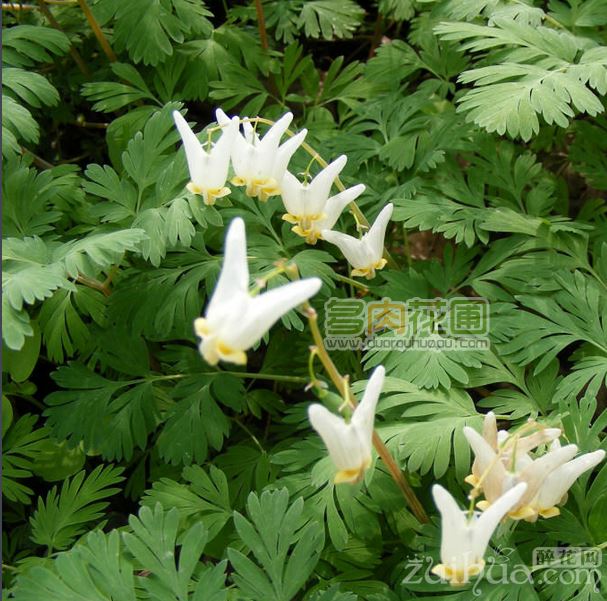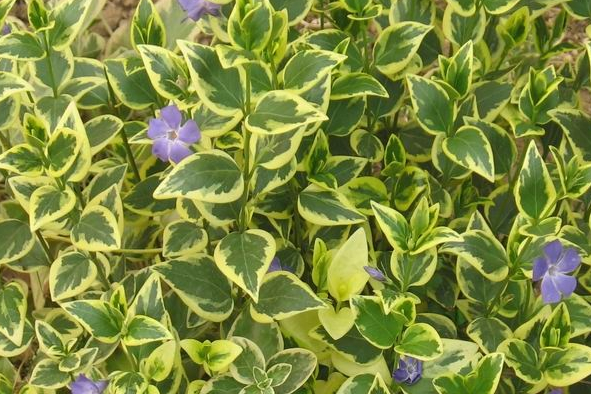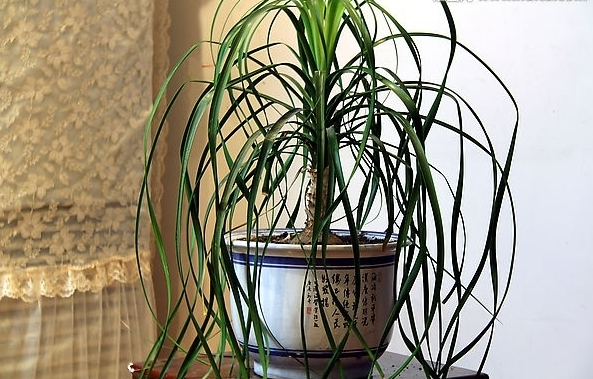Culture methods and matters needing attention of purse peony
Mode of reproduction
Ramets are often used or rhizomes are truncated for propagation. In autumn, the underground part is dug out, the rhizome is separated according to the natural segment, and planted separately. In addition, the rhizome can be cut into segments, each section with bud eyes, inserted in the sand, to be rooted after planting basin. After sowing and propagation, the seedlings can blossom after 3 years. Adequate fertilizer and water should be given during the growing period, and the florescence should be moved less so as not to affect the ornamental value of falling flowers. After flowering, the aboveground part withered, the roots can be dug up and potted, keep the temperature at 15 degrees Celsius and humid environment, and the flowers can be seen in about 70 days.
There are three propagation methods of purse peony:-it is the most commonly used method of plant division. In early spring, in February, when the new buds germinate and the new leaves are not on display, remove the plant from the basin, shake off the soil from the roots, and cut off the tender stems and whiskers around the roots with a sharp knife. Two or three plants are planted in-pots, covered with soil two or three centimeters above the old soil marks, watered, placed in shade, and managed routinely after growing new leaves, which can bloom that year.

The scientific name is Dicentra cucullaria. Flowers white, tip yellow, born on the flower branches, swaying with the wind, rather like upside down hanging Dutch breeches, hence the common name Dutch knickers. Native to open woodlands of eastern and mid-western North America. The leaves are grayish green, arising from white underground tubers; the flower stalk is higher than the leaf and is also drawn directly from the underground stem. It grows well in the shady and windless garden.
Culture methods and matters needing attention of purse peony
Purse peony bud is like a string of lanterns, hanging all over the branches, very lovable. Purse peony has beautiful leaves, exquisite flowers and brilliant colors, so it is a good material for potted and cut flowers. Then how to raise purse peonies? What are the breeding methods? Let's learn about the knowledge of purse peony culture.
First, how to raise purse peonies
Purse peony, also known as rabbit peony, is a perennial herb of Papaveraceae. Rhizome fleshy. The plant height is 30cm to 60cm. Leaves opposite, Ternate-pinnately compound leaves, slightly like peony leaves. Racemes terminal, flowers drooping to one side, petals 4, lateral two larger, combined into a heart-shaped capsule, showing pink, yellow, white and so on. The apex is rolled back to both sides, the inner two petals are slender, the apex is protruding, white. The florescence is from April to May.
Proper shade in hot summer, like to maintain in semi-shade, grow well. The root is fleshy and slightly resistant to drought, and the basin soil can not accumulate water for a long time. Proper watering during the growing period is appropriate to keep the basin soil in a semi-humid state. Watering is controlled at low temperatures in winter. In case of continuous rainy days, attention should be paid to preventing stagnant water in the basin. The leaves are beautiful and the flowers are exquisite, which can be planted or arranged in the garden; because of its shade tolerance, it is suitable to be planted under the tree as a ground cover plant and decorate the backlight of the rock garden. It can also be used for potted plants and cut flowers.
II. Measures for culture of purse peonies
1. Potted soil: purse peony can not only be planted on the ground, but also be planted in pots. Potted peonies are generally planted in pots, and it is better to choose clay pots with deeper depth and better permeability. Such as plastic basin, porcelain basin, can be in the basin bottom cushion broken charcoal block or broken hard plastic foam block, enhance air permeability and drainage. It likes to grow in loam soil with more humus and can be cultivated by mixed and cooperative cultivation of rotten leaf soil and vegetable garden topsoil, and grows poorly in sandy soil and clay soil.
2. Water and fertilizer: purse peony likes fertilizer. When planting on the basin or turning the basin to change soil, it is advisable to add some bone powder or mature organic fertilizer or N-P-K compound fertilizer to the culture soil, and apply thin N-P-K liquid fertilizer once from 10 days to 15 days during the growing period, so as to make its leaves blossom and multiply, stop fertilizing after flower bud coloration, and do not apply fertilizer during dormant period.
3. Light and temperature: purse peony is native to Hebei and Northeast China. It likes the semi-shady environment with sufficient scattered light and is more cold-resistant, while it is afraid of high temperature in midsummer and strong light exposure. Therefore, it is suitable to be placed under the big trees in the courtyard, under the grape frame, under the shady side of tall buildings, east or north balcony. Summer dormancy period should be placed in a well-ventilated shade, can not see direct light, and often sprinkle water to the nearby ground to improve air humidity and reduce the temperature.
4. Pruning and overwintering: in order to improve the ventilation and light transmission conditions of purse peony and concentrate nutrients, plastic pruning should also be carried out after defoliation in autumn and winter. Cut off dense branches, such as parallel branches, cross, introverted and pest techniques, etc., to keep the plant in a beautiful shape. In late autumn and early winter, potted herbs can be buried in the soil, with branches exposed on the ground and protected by grass or choked soil to survive the winter.
5. Florescence control: purse peony can be planted in a pot after defoliation in autumn and placed in Ling room. It will be moved to 12: 13 greenhouse in mid-December, keep moist, blossom in February, and then be placed in a cold room after flowering. Replant in the open field in early spring.
6. pest control: the common diseases of purse peony are cockscomb leaf spot and leaf spot. Spraying from the early stage of the disease to prevent the spread of the disease. The commonly used agents are 25% carbendazim wettable powder, 50% topiramine 1000 times, 70% mancozeb 500 times, 80% mancozeb 400600 times, 50% carbendan 500 times, and so on. Pay attention to the alternate use of agents to prevent bacteria from developing drug resistance.
The above is the introduction of purse peony culture methods. I hope it will be helpful for everyone to cultivate purse peony. I also want to know the relevant knowledge of purse peony and continue to pay attention to it.
- Prev

Culture methods and matters needing attention of flower and leaf vines in Changchun
Ramet propagation should be carried out in spring. At this time, the old branches of the last year are cut off, the plants are separated, planted separately and watered through; striping propagation is carried out in the growing season. Cutting propagation can be carried out all year round. The cutting substrate is made of perlite, vermiculite or sand with good water retention (growing season). Autumn and winter cuttings
- Next

Culture methods and matters needing attention of wine bottle orchid
The propagation method of bottle orchid is mostly sowing and propagation, but the seeds have not yet been planted in China, and most of the seeds are imported into □ from the country of origin. When sowing, sow the seeds on the substrate mixed with rotten leaf soil and river sand, keep it moist, not too wet, or it will cause rot. In a temperature of 20-25 degrees Celsius and a semi-overcast environment
Related
- Fuxing push coffee new agricultural production and marketing class: lack of small-scale processing plants
- Jujube rice field leisure farm deep ploughing Yilan for five years to create a space for organic food and play
- Nongyu Farm-A trial of organic papaya for brave women with advanced technology
- Four points for attention in the prevention and control of diseases and insect pests of edible fungi
- How to add nutrient solution to Edible Fungi
- Is there any good way to control edible fungus mites?
- Open Inoculation Technology of Edible Fungi
- Is there any clever way to use fertilizer for edible fungus in winter?
- What agents are used to kill the pathogens of edible fungi in the mushroom shed?
- Rapid drying of Edible Fungi

